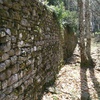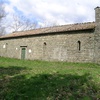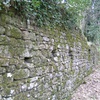Castle of Benabbio
Benabbio was among the largest castles in the Upper Serchio Valley and today remain portions of its fortifications. The complex was at the top of a relief overlooking the city and consisted of a keep, city walls and an additional defensive tower, located on the south side, in a lower position than the main fortifications, and acting as a watchtower over the access roads.
The Church of Santa Maria Assunta, of medieval origin, is the most important place of worship and has three naves. Renovated in the sixteenth century, it houses valuable works from the fourteenth century, such as the triptych by Baldassare del fu Biagio di Firenze depicting the Madonna and Child with Saints. Dating back to the thirteenth century there are valuable wooden statues representing the Annunciation by Pietro D'Angelo, father of Jacopo della Quercia. Also displayed is a wooden statue of the Madonna and Child of the fourteenth century and a marble ciborium by Matteo Civitali.
Historical notes
It is possible to reconstruct the history of the settlement from various sources. It is likely that the original castle of Benabbio arose on the higher land and the original church of Santa Maria was located at the foot of the mountain, along the road leading to the fortified settlement. Only later, in the thirteenth and fourteenth centuries, was the castle equipped with a noble area, separate from the other housing and the church, according to a scheme to protect but also dominate the surrounding population.











